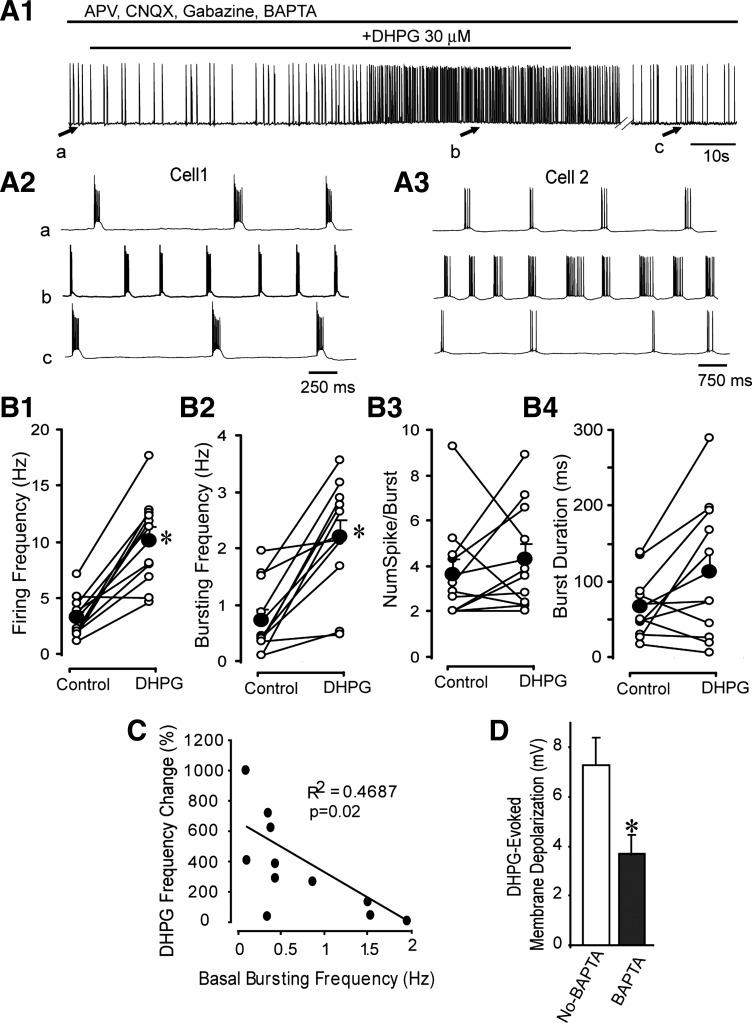Fig. 5.
DHPG enhances rhythmic bursting in presence of BAPTA. A1: current-clamp recording with a BAPTA-based recording solution shows that DHPG increases ET cell burst frequency in the presence of dl-2-amino-5-phosphonovaleric acid (APV; 50 μM), 6-cyano-7-nitroquinoxaline-2,3-dione (CNQX; 10 μM), and gabazine (10 μM). A2: faster time-scale records taken from the 3 points indicated in A1. Note increase in burst frequency and decrease in number of spikes per burst with DHPG. A3: in another ET cell, DHPG increases burst frequency and the number of spikes per burst. B1–B4: scatterplots showing the effects of DHPG on burst parameters in 11 ET cells. Filled circles denote means ± SE. *P < 0.05, paired t-tests. Note increase in firing frequency and burst frequency. NumSpike/Burst, number of spikes per burst. C: scatterplot of the relation between the basal (intrinsic) burst frequency and the increase in frequency elicited by DHPG. Note the larger enhancement of burst frequency in cells with slower basal burst rates. D: graph shows that the DHPG-evoked depolarization is significantly reduced in ET cells recorded with a BAPTA-based internal solution. *P = 0.012, unpaired t-test.

